Of all the challenges facing B2B technical businesses, generating high-quality leads comes top, with converting leads into customers a close second.
Where the solution is a high-ticket item, involving some serious know-how or maybe some capital equipment rather than some pay-as-you-go software, the challenge is way tougher.
Why?
Fewer companies can afford your offer, so your market is narrower. Cost and implementation issues mean more people get involved in your sales process.
As a result, the process gets drawn out over months, if not years. The size of the prize makes the wait worthwhile, of course, but the complexity of it all creates risks which can be difficult to spot and eliminate.
If your sales pipeline is neither as full nor as fast-flowing as you’d like it to be, I hope some of the following thoughts may help.
1. Consider the Prospect Journey
Many technical businesses leave the sales process pretty much entirely to their technical sales team, with little marketing or sales support.
The most successful tech sales functions, on the other hand, enforce the use of a good CRM to keep them on top of the prospect journey.
They may also have a documented sales process and provide a variety of tools (online demos, email templates, reference site visits) to engage every type of buyer and keep the momentum going until the journey is complete.
The best sales results also demand great marketing support, such as content and e-nurturing campaigns to tickle out early leads and client-endorsed case studies to give real credibility.
They may be given ready-to-buy sales leads from telemarketing and have a bid support team to shoulder the workload during tenders. All of which allows them to focus entirely on new business development.
Is there more you could do to ease the passage of your prospects through your sales process?
2. Recalibrate Your Sights
You’ll no doubt have a clear target market, and may have a sound understanding of which roles you need to court. But to beat the market, you’ll need to match your effort and your people very closely to the unique purchasing process of each prospective customer.
Tailoring your sales process around your prospect’s purchase process will differentiate your organisation and increase your chances of winning their business.
To frame your sales approach, you need to know things like:
- When each business will next come to market
- What they have in place currently – and why
- How their buying process works
- What their business goals are
This means knowing who can tell you this information, which brings us on to prospecting data.
For some tech solutions, great data for your prospecting can be bought off the shelf, although you won’t be the only company to have access to it.
Where no suitable data can be found, you can either take what you’ve got or buy some raw data and invest in developing it yourself.
Keep in mind that the two top imperatives are to find the right people and understand the timeline to purchase.
The early bird really does catch the worm. Where business is put out to tender, getting under the skin of your prospect before they’re even thinking about buying will keep you out of the bun fight which will otherwise ensue at the end of their purchase process. It will also give you the time and opportunity to differentiate and tailor your offer.
3. Align your Message
We all take personalisation for granted today and you know it’s not just techies you’re selling to. Beware jargon, especially when dealing with non-tech targets.
Can you do more to ensure that every element of your communication, at every step of the journey, is tailored to the target and that specific moment in their purchase process?
Focus on what the prospect is looking for, not what you think they need to know. Many sales approaches fall apart because the seller focuses on what they have prepared to transmit, rather than what the prospect wishes to receive.
Technical sales people can be prone to sharing what they know and love best (technical stuff) at the wrong moment or to the wrong buyer, putting a nail in the coffin of the relationship.
Identifying where the buyer is in their journey helps you tune into and address their needs at that point. And one final point. Their time is precious – keep it brief.
4. Review Resourcing
To shore up your sales machinery, bridge the gaps using the best quality resources you can afford. Every word, every detail, every data item counts.
If poor data is a problem, revisit the market – it reshapes itself every few years.
If your leads are of dubious quality, root them out and find a new way. And if your tech sales people are more farmers than hunters, why not take a look at outsourcing?
“But our product or service is too specialised and niche, external companies won’t be able to help.”
This is a concern often expressed, and it’s understandable. In a technical marketplace, you will have specialist sales people who know your company and solutions inside out. And you may worry that a non-techie simply won’t be able to deal with the technical questions which crop up. Or understand the terminology.
However, “what you do” is not what you’re selling.
You’re selling the difference you can make to your customer. Someone less technical may be able to apply a different kind of specialist knowledge to your complex technical sell – knowledge about why people buy, and why they don’t.
The early stages of lead generation are time-consuming; wrangling with gatekeepers, making volumes of calls and managing rejection are not everyone’s cup of tea.
Surely your top sales people will be happier and more productive if they’re handed warm qualified prospects who are ready and primed to be wowed?
It’s worth remembering that two out of three buyers are non-technical and more interested in commercial or operational matters than they are in widgets.
For this reason, non-technical prospectors, whether in-house telemarketers or outsource agencies, will often have greater success in presenting technical solutions credibly and generating well-qualified leads, helping make better use of your specialists’ time.
Involving a third party with strong sales process expertise puts the spotlight firmly back where it belongs, on the prospect rather than the technology.
To make more sales, it’s back to basics – focus everything exclusively around the prospect and what’s important to them.
Don't forget to share!

Six Steps to Secure More New Prospect Meetings
Most sales leaders would agree that no two sales people are the same, but the same key factors will affect their performance in the role

10 Factors for Success When Building Your Strategic Sales Hit-List
Many of our clients have a hit- list, or wish list of companies they’d particularly like to win business from. They’re often astonished that we

Calls Per Hour – What’s The Magic Number?
Volumes are important but maybe not for the reasons you think… The old adage “it’s a numbers game” applies to a degree; you have to





